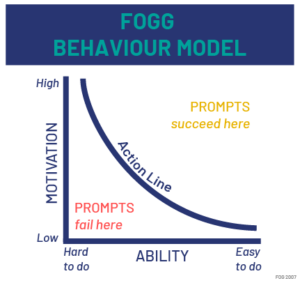From an organisational perspective, how can we use Habit Theory to achieve excellence in areas important to our organisations?
Organisational culture is an amalgam of habits
An organisation’s culture can be defined as ‘the way we behave and do things around here’. Habits can be defined as ‘behaviours that are performed repeatedly and usually automatically’. The connection between culture and habits then is clear: culture is arguably a series of habits that have been adopted by an organisation, some by design and some by default usually. There is no organisation that doesn’t have institutional habits. There are only places where they happen without forethought and places where they are deliberately designed, practised and reinforced. The former is likely to be toxic and disabling, the latter high performing and enabling.

"The organisations that are going to thrive in the years to come are organisations whose people can anticipate and adapt to change."
Because clarity and a good dose of organisational self-awareness are critical departure points for organisational high performance, it might be helpful to take an audit of your organisational culture: What about the way we behave and do things enables or conversely disables high performance as we have defined it? In other words, what good habits do we have and what bad habits do we have? What you find might surprise you, but you will have a treasure trove of habits with which to work to create the culture and the organisation of your dreams.
And so, to action
“If you’re having trouble changing your habits, the trouble isn’t you; the trouble is your system.”
James Clear
Clear argues persuasively that it is processes, not goals, that enable positive progress. He describes “atomic habits” as those small but powerful habits which are part of a larger system of routines – effectively, a process towards the desired results. He believes that fixating on objectives may be counter-productive; instead, by concentrating on improving the system of these atomic habits, the outcome will naturally follow.
Clear points out that there are three layers of behaviour change: Outcomes, Processes and Identity. Take customer service as an example. An Outcome would be to improve customer service ratings by 10%; a Process would be to put in place a system or routine for improved service; an Identity would be to truly believe in customer service as an organisation, not simply to pay it lip service while in practice focusing on other priorities. In an organisational context, the suggestion is that one needs all three, supported by a fourth: Action – in order to ensure lasting Habit adoption.
To build a culture or a habit of customer service, it would be important to define the full value chain of service and break it down into its component parts. And, where possible, to ‘habit stack’ by adding a new desired habit on top of an existing one. For instance, ‘after a client call (existing habit), we will email the client within 12 hours to clarify outcomes and note any follow-ups’ (new habit).
“A people business serving coffee with an entire business model based on fantastic customer service.”
Howard Behar, former Starbucks president

And they did it by turning self-discipline into an organisational habit. After a failed attempt at boosting workers’ willpower through gym memberships and diet workshops, Starbucks realised that they needed other ways to boost their people’s willpower when under pressure, especially in any number of angry-customer scenarios.
What they did for their employees was to give them willpower habit loops, practised time and again until they become automatic.² MIT researchers had discovered a simple neurological loop at the core of every habit, a loop consisting of four parts: a cue, a craving, a routine or process, a reward/s. To understand habits, one needs to identify the components of the loops. Starbucks followed this habit loop process in embedding willpower as a crucial habit for great customer service in all circumstances, especially when facing customer anger or abuse.
Another example from the corporate world: Google founder Larry Page changed the company’s decision-making culture to one where “decisions should never wait for a meeting. If it’s critical that a meeting take place before a decision is made, then that meeting needs to happen right away.” The learning is that even small behavioural changes can habituate an important improvement in a company’s processes and culture.
The transformation of struggling Pittsburgh-based industrial giant, Alcoa, by Paul O’Neill, appointed as its new CEO in 1987, is an excellent example of how a focus on habits can change organisational culture and performance. O’Neill identified the company’s dire safety record as a root cause of multiple systems weaknesses and performance-related issues. As O’Neill put it, “If I could disrupt the habits around one thing, it would spread throughout the entire company.” By better protecting its workers through instituting stringent safety measures – adopting non-negotiable habits of safety excellence – trust and improved communication between management, workers and unions was established. This in turn was a crucial foundation for improving operations, efficiencies, and all-round performance.
When O’Neill left Alcoa thirteen years later to become USA Treasury Secretary, the company’s annual revenues were five times larger, and Alcoa’s market capitalisation had increased by $27 billion. Institutional investors who had initially sold down the stock because of O’Neill’s ‘hippie-like’ approach, were left to rue their decisions!

A story from the sporting world: After the All Blacks lost the 2007 Rugby World Cup quarter final, by their own admission because of poor decision-making when under pressure, they introduced a concept called ‘Red Head/Blue Head’ thinking for staying in an optimum mental state in big game moments. Then they repeatedly practised the appropriate mindset response in typical high-pressure match situations.
The brilliance of the system was to create a habit of best practice decision-making and action under pressure. The All Blacks went on to win the 2011 and 2015 Rugby World Cups and establish a win record of over 90%, never before achieved in any sport anywhere.
The Power of Identity
"The identity we assume as individuals and as organisations is critical to the successful adoption of habits."
Howard Behar, former Starbucks president

Some habit changes are easier than others
It may be helpful, in assessing the viability of adopting a new habit or dropping an old one, to check it on the Fogg Behaviour Model (see diagram below). Proposed habit changes should sit above the model’s Action Line, where higher motivation is matched with the relative ease of adopting the habit.

Increase the odds that the habit will stick:
Stack habits where possible
Make the cues of good habits obvious in your environment
Make the habit attractive. Approval, respect and praise would all qualify in this regard. Consider also a slight mindset shift, for instance, instead of ‘We have to’ for the tough habits, try ‘We get to’ and reframe the habits with their benefits.
Get to action and start with repetition, not perfection. Make the habit easy. Habits form based on frequency, not time. The statement ‘It takes 21 days to form a new habit’ is, well, rubbish.
Make the habit immediately satisfying where possible. This will ensure that the behaviour is more likely to be repeated. In an organisational environment, tracking and reporting with highly visible results is a good way to do this.
Set up a deliberate practice³ process in order to master the habit.
"High performance itself happens because of what you deliberately think and do on a routine basis in order to excel and serve on higher levels."
- You want an organisational culture of customer service?
- Financial discipline?
- Resilience?
- Engagement?
- Diversity and inclusion?
- Authenticity?
- Excellence?
- Quality?
- Competitiveness?
- All of these?
"Adopting Habits for High Performance removes the risk and maximises the upside."
References:
- Thomas Friedman, Thank you For Being Late: An Optimist’s Guide to Thriving in an Age of Acceleration (Farrar, Straus and Giroux, 2016)
- See the full story in Charles Duhigg, The Power of Habit (Random House, 2012)
- A term coined by cognitive psychologist and performance expert Anders Ericsson

